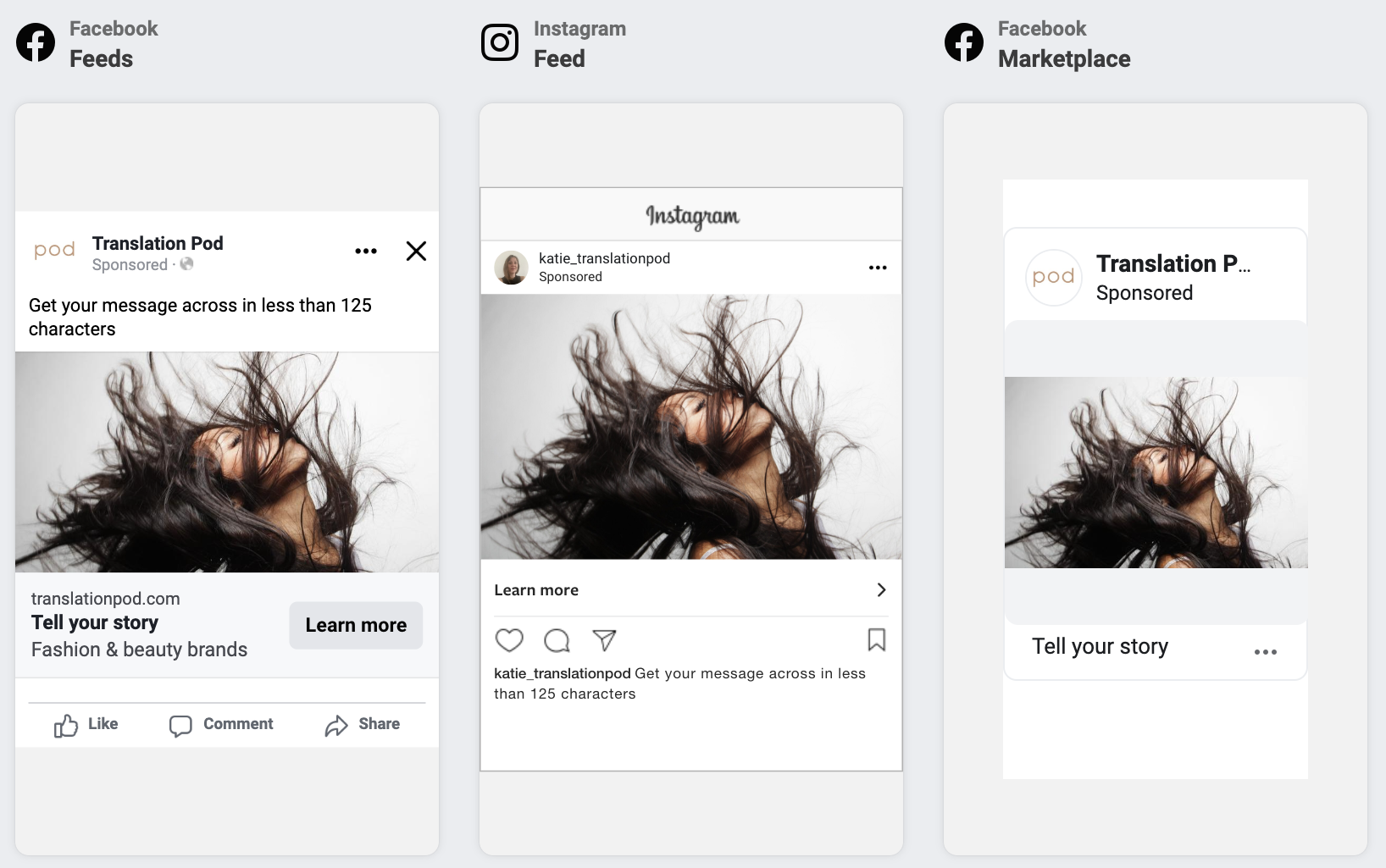How to write for international markets
Creating a global ad campaign for your brand? Or maybe you need to translate your copy for non-English speaking markets? Here are some things to think about when creating your content to make sure nothing gets lost in translation.
Rule #1 Don’t max out the character limit
Character limits. There’s no escaping them if you’re a copywriter. From Facebook ads to email subject lines, landing pages and direct mail, there will always be constraints imposed by the design.
English tends to be shorter than other languages so if you reach the character limit or completely fill the space available, it’s likely to cause problems for the translators in local markets.

It can be fun working out how to write an interesting CTA without going over 20 characters. But it is much less fun and a lot more time-consuming when you’re trying to translate it into French or Italian (and no, automated translation tools won’t do it for you).
Keep it simple and leave some space so that other languages have room to play.
Rule #2 Think about timing when creating audio content
If you’re writing a script for radio or videos on social media (30 seconds, 60 seconds, etc.), you need to take the timing into account.
Look up the average speed of spoken English and you’ll find estimates of around 120-150 words per minute. The good news is that other languages are often faster and can be upwards of 200 words per minute. But you still need to take into account the fact that your original script will probably be longer when translated into the target language.
Onscreen text also needs to be short so it doesn’t cause problems for the translators. Check the Netflix subtitling guidelines for information on reading speeds and character limits.
Rule #3 International means US English (usually!)
So what happens if the content isn’t being translated? Many briefs call for what is commonly known as “International English”. The problem is that this doesn’t really exist.
Most of the campaigns we work on are localised for the UK, Canada, Australia and New Zealand, which means changing some of the vocabulary and spelling.
However, if you’re writing copy for a global campaign, US English is usually your best bet. The majority of non-native speakers tend to be more familiar with American terminology and spelling (French people often politely correct English-speakers when we say “rubbish” instead of “trash”!).
In general, try to avoid idioms or expressions that are associated with a particular English-speaking country and keep it as standard as possible. This will give you the best chance of being understood in multiple markets.
Rule #4 Write for non-native speakers
Some brands also insist on keeping campaign headlines in English to keep the overall campaign consistent. “Just Do It” isn’t translated in Nike campaigns and the latest Ray-Ban campaign “Genuine since” was similarly left in English in most European and Asian countries.
The trick is to come up with a line that will be familiar to your audience even if they are not native speakers.
I once tried to work “va-va-voom” (stolen from the Thierry Henri Renault ad) into a headline for a fashion eyewear brand. The alliteration worked with the brand tagline, it was catchy, and the tone was just right for the target audience – except it wasn’t.
None of the local markets understood what it meant. The campaign was running in eight markets across Europe and South America, so the headline had to resonate with a multilingual audience.
Rule #5 Don’t mix your languages
Subtle references to the brand’s origin can sometimes work really well in campaigns. Bilingual headlines like the Stella Artois campaign “C’est Cidre Not Cider” play on our cultural associations (“cidre” sounds more refined than plain old cider).
The problem with these campaigns is that they will only ever work in those two markets.
I saw an ad for Jordans cereal on the tube in London a few years ago with a headline in Greek: “Δοκιμάστε το σε γιαούρτι” (Try it on yoghurt). As a Londoner who speaks Greek (albeit as a rusty second language), this ad was right up my street. But with a population of around 300,000 Greeks in a city of 9 million, this ad was always going to be pretty niche.
The non-Latin script may have caught some people’s attention, but most of us feel an immediate barrier when something is written in a language we don’t understand.
For the best chance of success, always aim to make your copy as universal and inclusive as you can.
Rule #6 Avoid cultural references and stereotypes
Some cultural references will work fine, while others will fall flat in other markets.
Danone’s Perle de lait ad back in 2012 is a good example of when things go wrong. Although the original French ad was rewritten in English, the message (“this yoghurt will make you feel beautiful”) and the “cute French girl” stereotype just didn’t work for the UK market.
https://www.youtube.com/watch?v=wITmEmA5Flw (Original French)
https://www.youtube.com/watch?v=6e98Qq0UIDk (Dubbed in English)
Dolce&Gabbana made even more of a mess of cultural references. The now infamous ad featuring an Asian model eating spaghetti with chopsticks caused widespread offence in 2018 and the brand is still struggling to improve its image in China several years later.
In contrast, the American-who-can’t-speak-French stereotype has proved a hit among audiences on both sides of the Atlantic. The Netflix show Emily In Paris used this trope to hilarious effect, while the French “Do you speak Oreo?” campaign played to its audience’s expectations by featuring Owen Wilson fluffing his lines in a strong American accent.
Rule#7 Always specify if it’s formal or informal
If you’re sending your English copy for translation into local languages, always let the translators know if it should be the formal or informal “you” (“vous” or “tu” in French, for example).
We don’t differentiate between these two forms of address in English and it will change the TOV in other languages if the translators choose the wrong one.
Rule#8 Finally, don’t rely too much on adaptation
Localisation has its limits. Translators and copywriters can adapt campaigns to a certain extent but it becomes a game of equivalence which can sometimes backfire.
The London Gent ad by Jo Malone is a classic example of how not to do localisation. Created in partnership with the actor John Boyega, and based on his own experiences of growing up in London, the ad was completely recast for the Chinese market.
The brand came in for some heavy criticism from John Boyega who was replaced by a local brand ambassador in a retelling of his personal story. The actor ultimately stepped down from his role but the brand lost more than just the face of their campaign.
By localising the ad instead of creating a new story, Jo Malone undermined what made it so powerful and relatable in the first place. It’s a question of authenticity. People have to believe the story you’re telling them, otherwise it becomes meaningless.
Want to find ideas that work in every language?
Here’s where we go for inspiration:
The most recent campaigns from around the world so you can see what is resonating with people in international markets and draw inspiration for your own campaigns.
The latest campaigns and marketing trends in France.
A quick way to find examples of catchy taglines and different TOVs in English.
Lets you search all email communications that brands have sent out to their subscribers. Great for when you’re researching your competitors.
See how a word or phrase has already been translated into different languages. The examples include marketing texts and subtitles so it’s useful to check how slang and colloquial expressions can be translated.
Search vintage ads for inspiration and check how taglines or headlines have been translated in the past.

